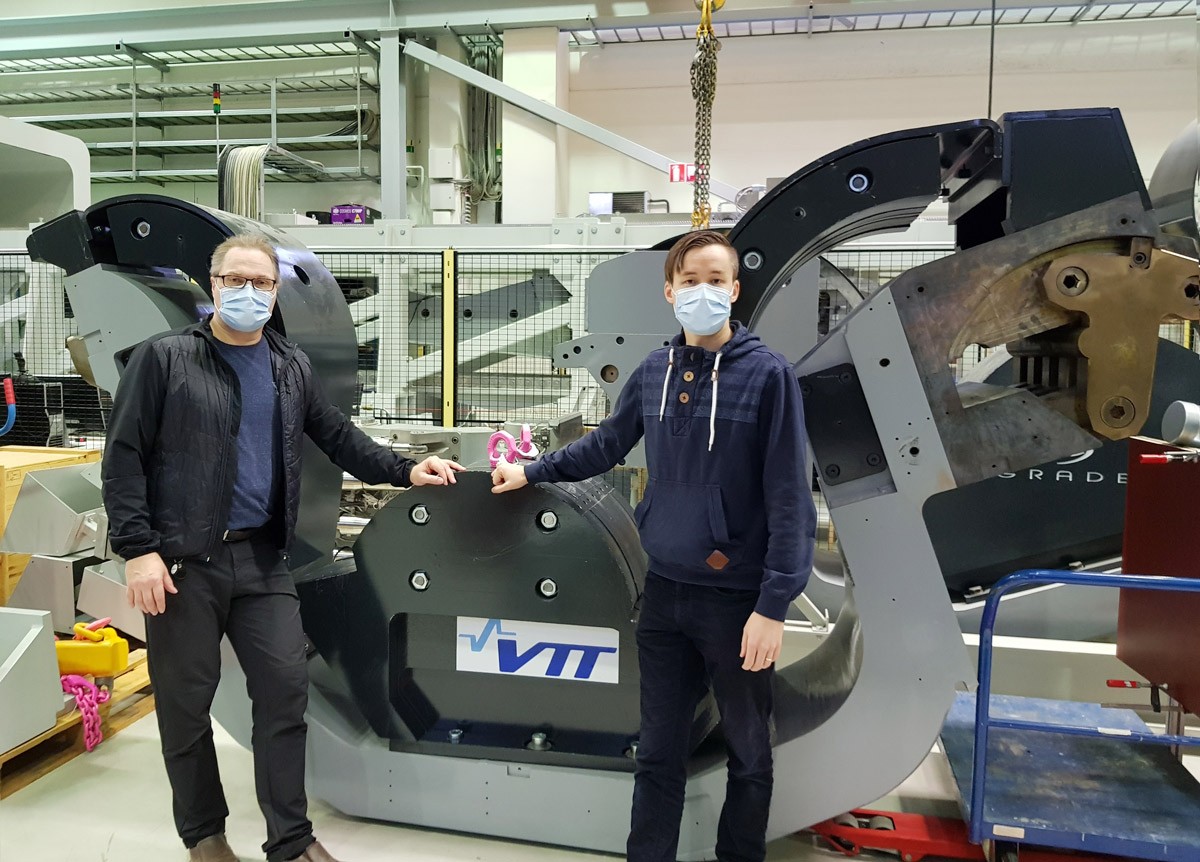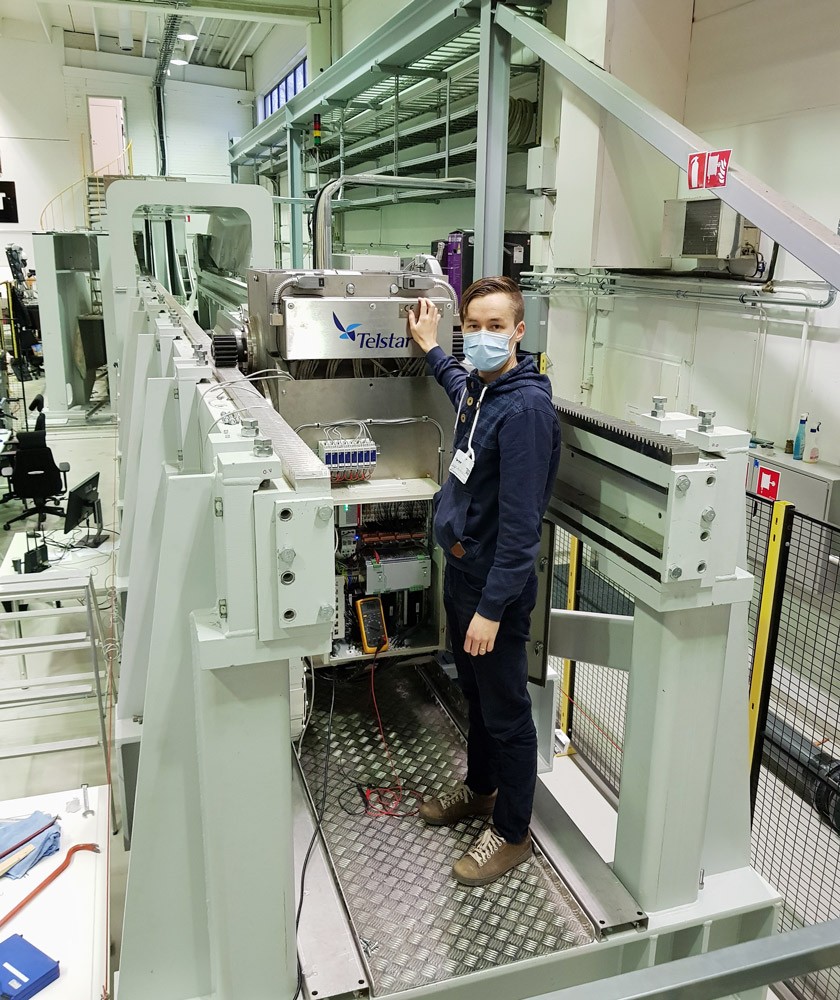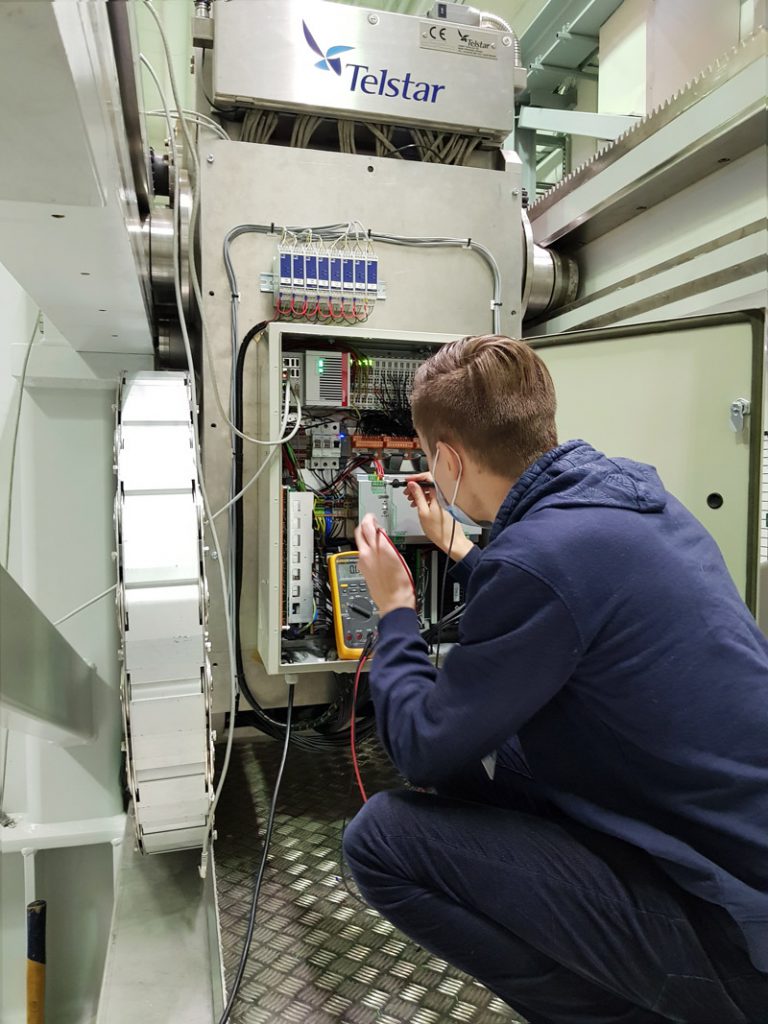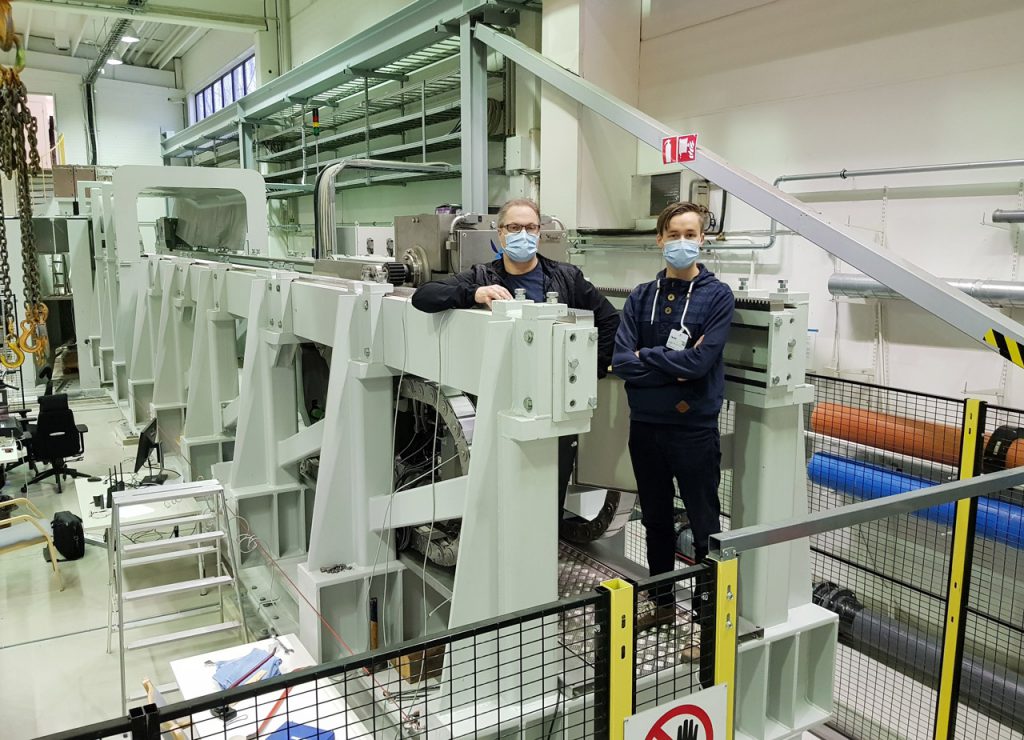Hydraulic Digital Valves installed in ITER Remote Handling facility

(L-R) Hannu Saarinen (VTT), Miika Paloniitty (Tamlink), standing in front of the ITER Cassette Divertor mock-up, which will be used to test the performance of the hydraulic digital valves transferring the heavy component in its trajectory. F4E has financed the mock-up and the hydraulic digital valves prototype.
Can you imagine lifting a piece of equipment which is more than 3 m long, weighs approximately 10 t and needs to be transported steadily and with extreme precision in a dark tunnel with just 20 mm of space above and below? It’s a claustrophobic scenario making any professional weightlifter to look for the panic button. In ITER, however, a calm temperament must prevail when we need to lift, tilt, fix and remotely replace several of its heavy components. Due to the fact that the maintenance works cannot be performed with the physical presence of engineers in the vacuum vessel, experts are developing sophisticated systems using robotics and virtual reality. This is why in the Divertor Test Platform facility (DTP2), Tampere, Finland, operators have started becoming familiar with a new system using hydraulic digital valves, which will give them a hand lifting the ITER Divertor Casettes.
For nearly two year, engineers from Tampere University, Fluiconnecto Oy and Tamlink Oy have been continuously designing, manufacturing, and testing the digital hydraulic valves by performing millions of cycles. Subsequently, they introduced several improvements in their design and fabrication. But getting there was not easy. They had to experiment with four design variations, use different materials and welding techniques, produced hundreds of them to narrow it down to few. Today, we are pleased to announce that they have successfully produced the first prototype of hydraulic digital valves in line with ITER specifications. The system relies on 16 fast, small and simple on/off valves working simultaneously to achieve the required performance. They are much more resilient and contrary to servo valves, where the system relies solely on one, digital valves offer a combination of various. In the event of failure, five of them can still guarantee completing the job.

Early this year and up until June, the valves had to go through final acceptance tests. In August, they were transported to VTT, where DTP2 is hosted, to be integrated in the remote handling robotic prototypes, known as Cassette Multifunctional Mover which will flex its muscles lifting a mock-up of an ITER Cassette. The team of engineers successfully concluded the installation and commissioning of the equipment in November. The tests, during which the valves will support the movement of the cassette through the tunnel, will be completed in March 2021.

“The hydraulic digital valves will make our Remote Handling equipment more reliable and robust for the adverse conditions in the ITER device,” explains Salvador Esque, F4E Remote Handling Technical Officer.
The arrival of this new equipment signalled a wave of upgrades in the rest of the facility. New infrastructure and computers running Genrobot, the software that Europe has championed for remote handling operations in ITER, are in place. The upbeat atmosphere does not end here. If it all goes well, the companies behind the digital hydraulic valves will consider commercialising this patent launching this version using water, to complement the one using oil which is available in the market.
“Like pieces of a jigsaw, all novel technologies developed in our Remote Handling programme, will need to fit in order to create a reliable operating system. The hydraulic digital valves plus Genrobot, are some of the many pieces that will have to be connected seamlessly to serve the maintenance of the ITER device,” says Carlo Damiani, F4E Remote Handling Programme Manager.

Miika Paloniitty, Senior Researcher, Tamlink Ltd offers a short comment on the significance of this milestone. “Tamlink has been involved in the R&D of the digital water hydraulic valves and controllers since 2014. Now, we are taking a major step with their integration carrying out cassette exchange drills in DTP2. Each of the four water hydraulic axis is already equipped with digital valves and controllers which have successfully passed performance tests.”